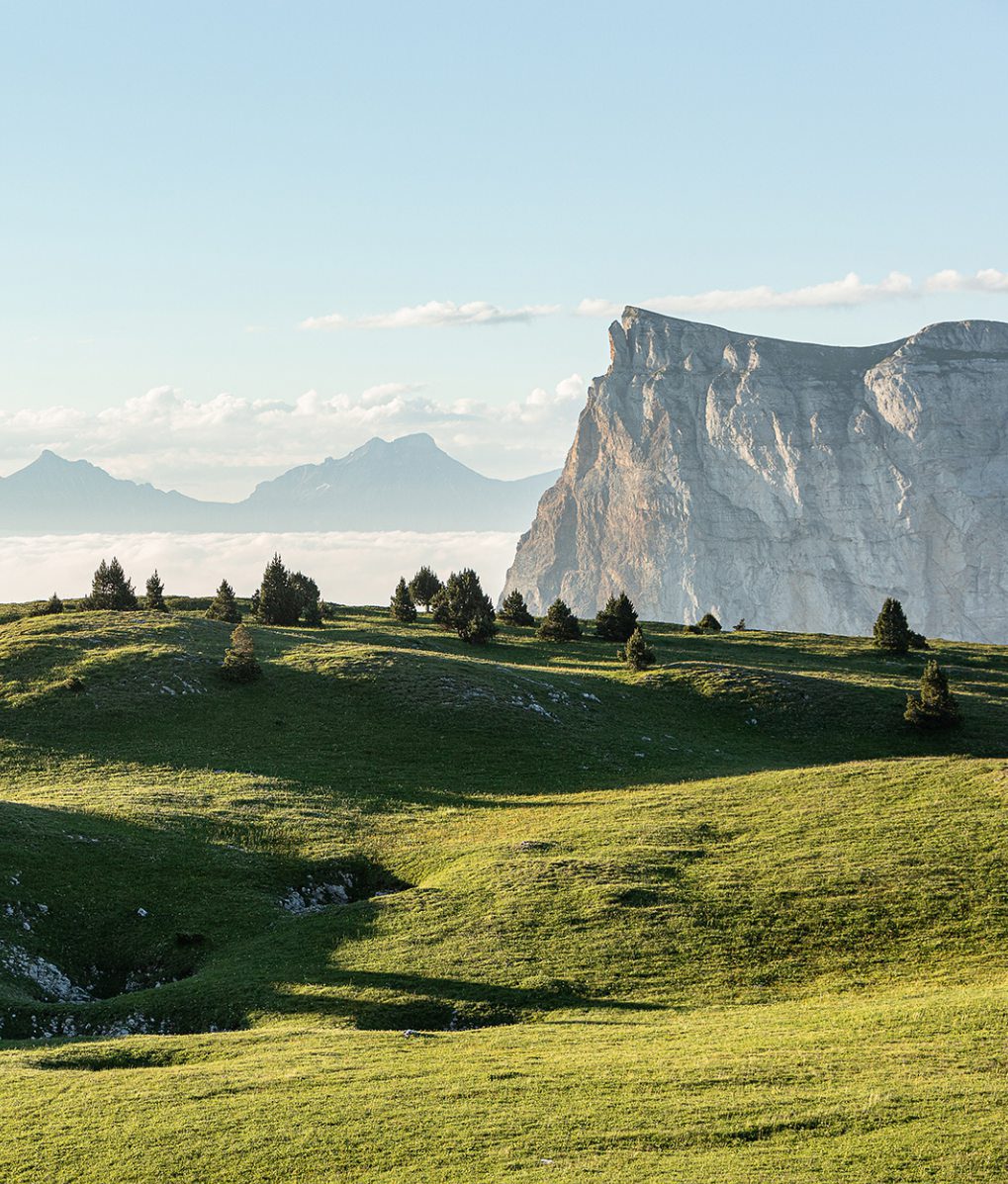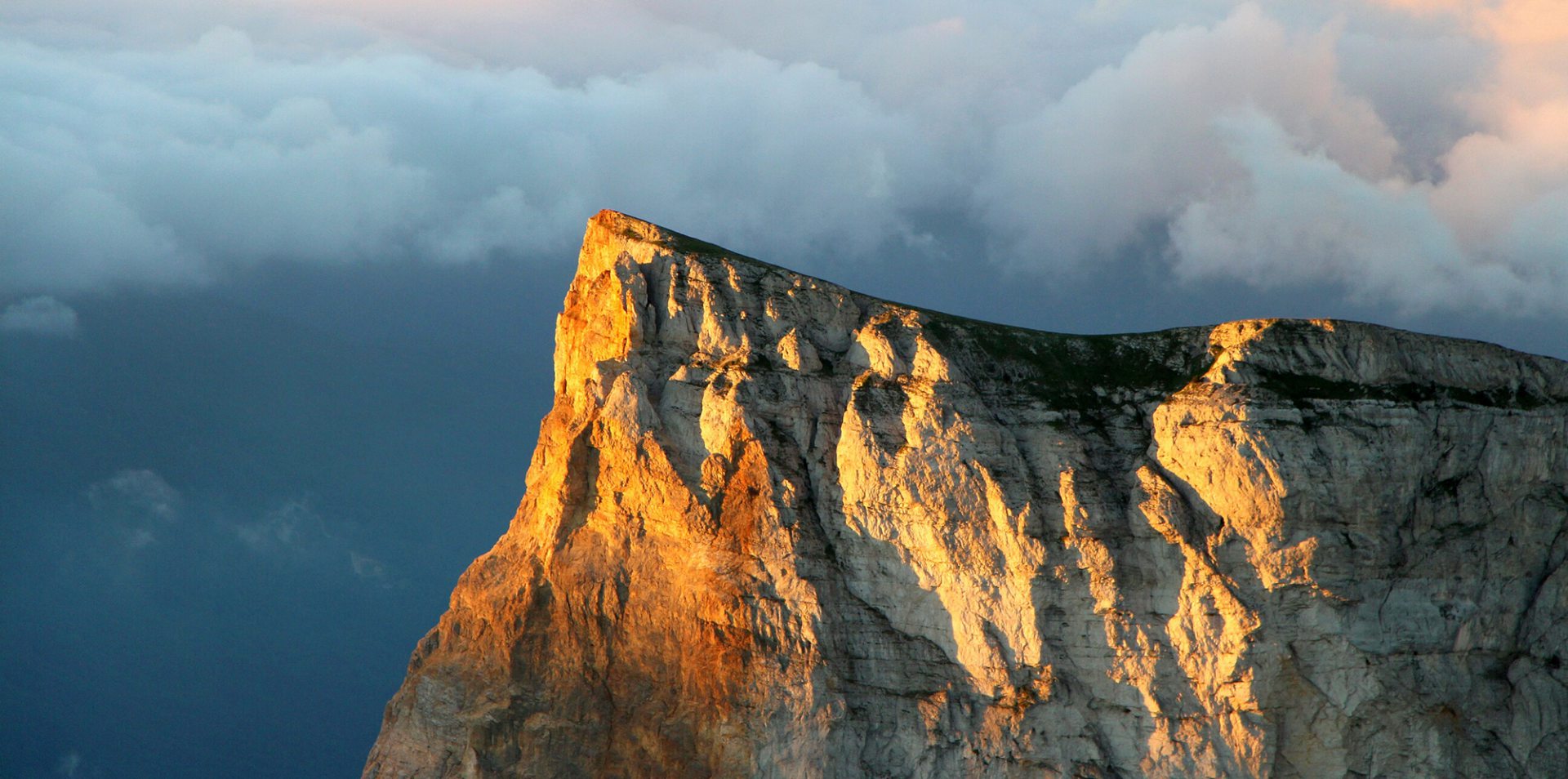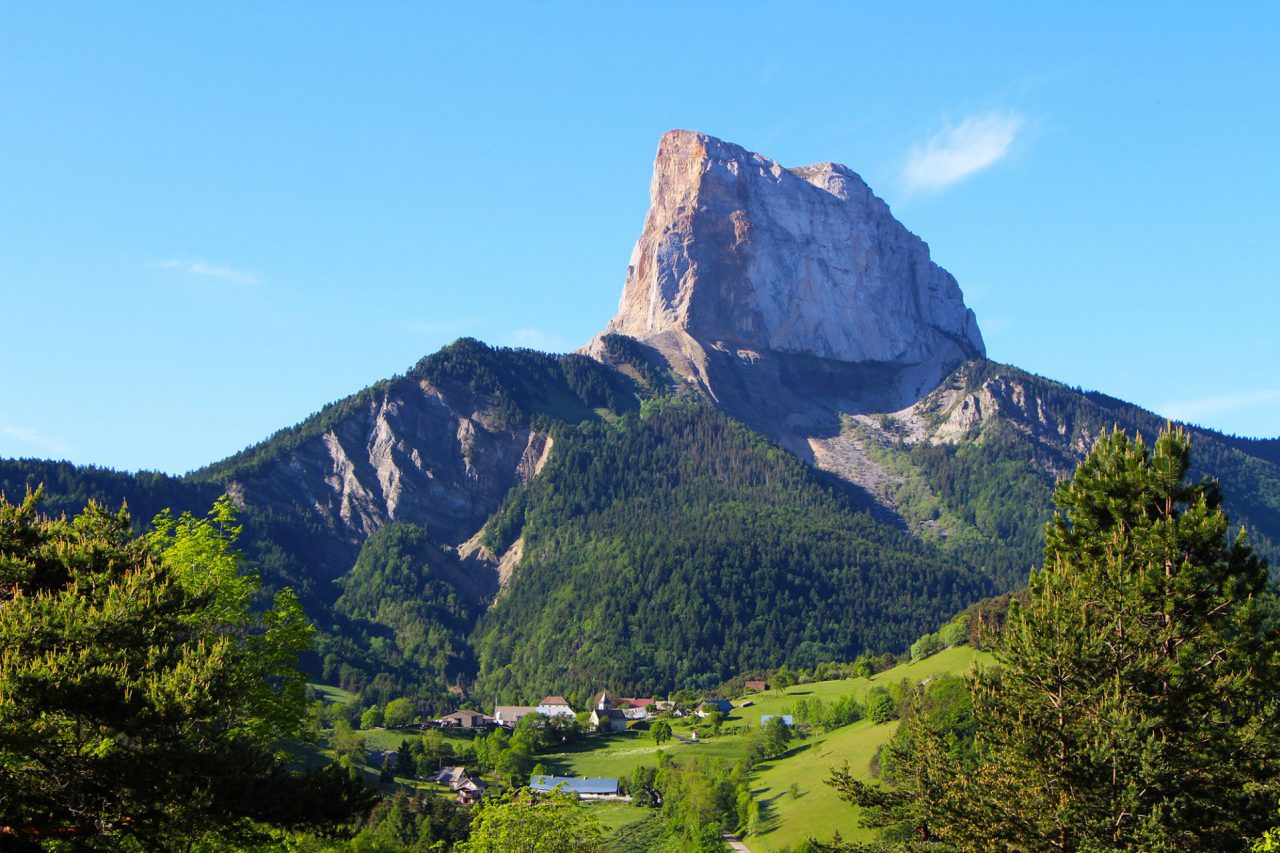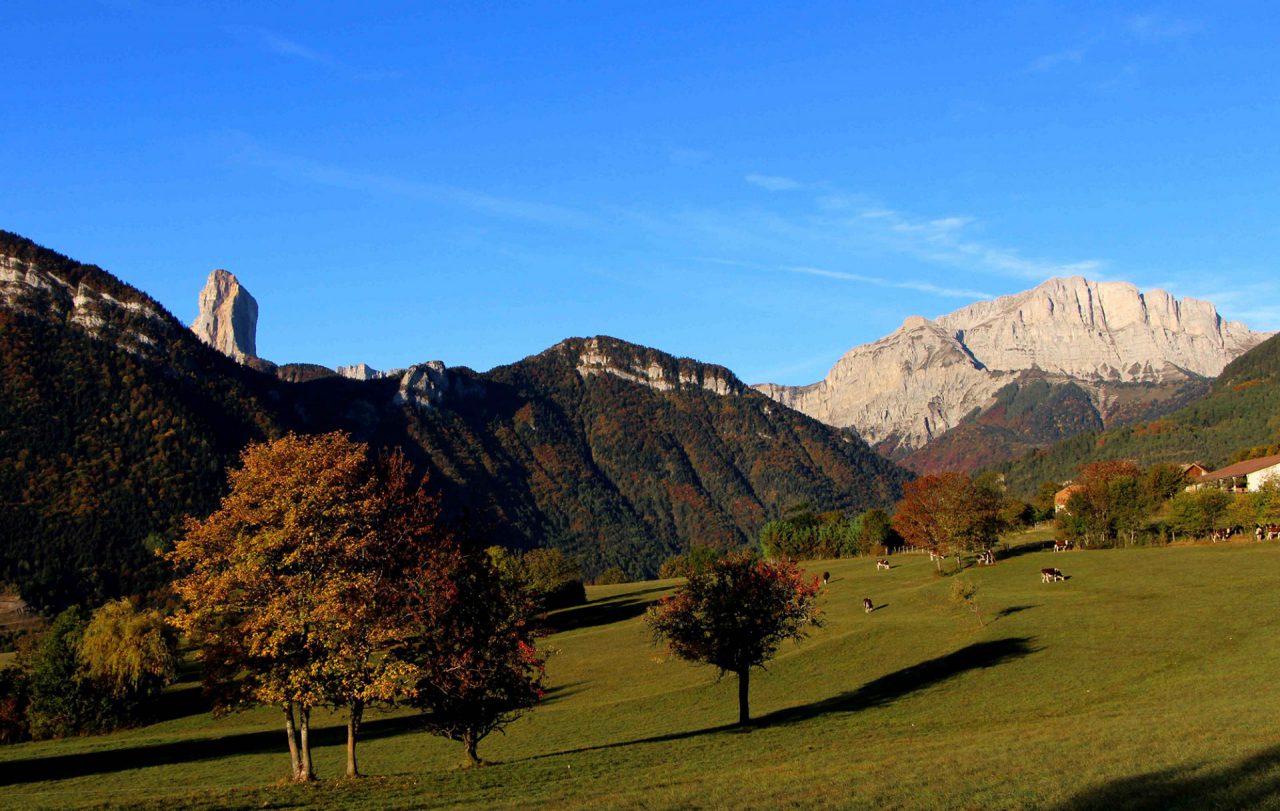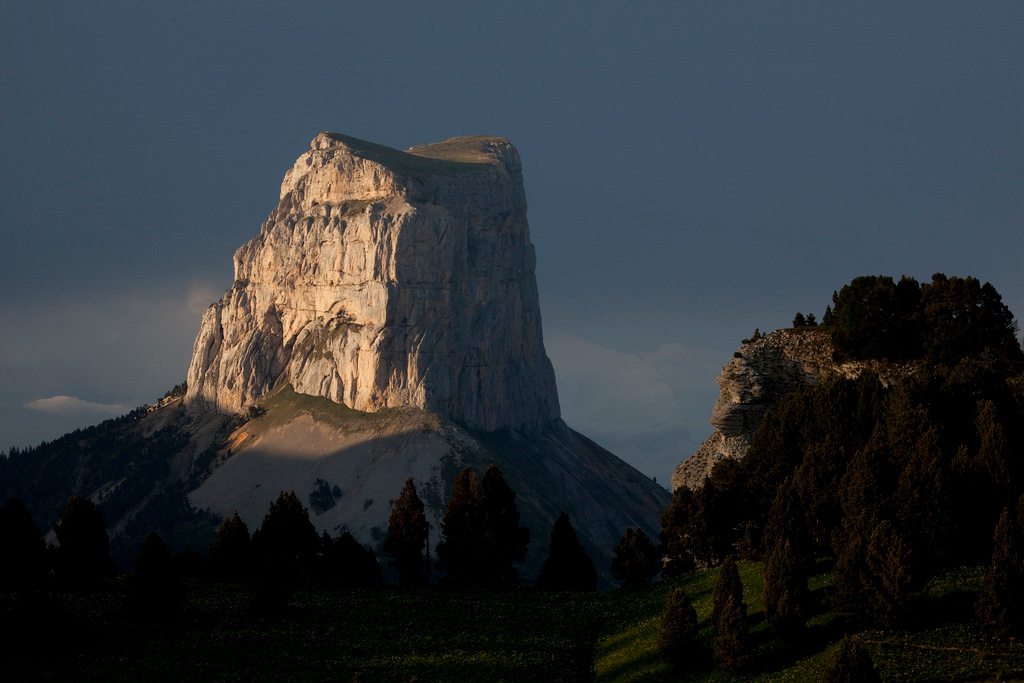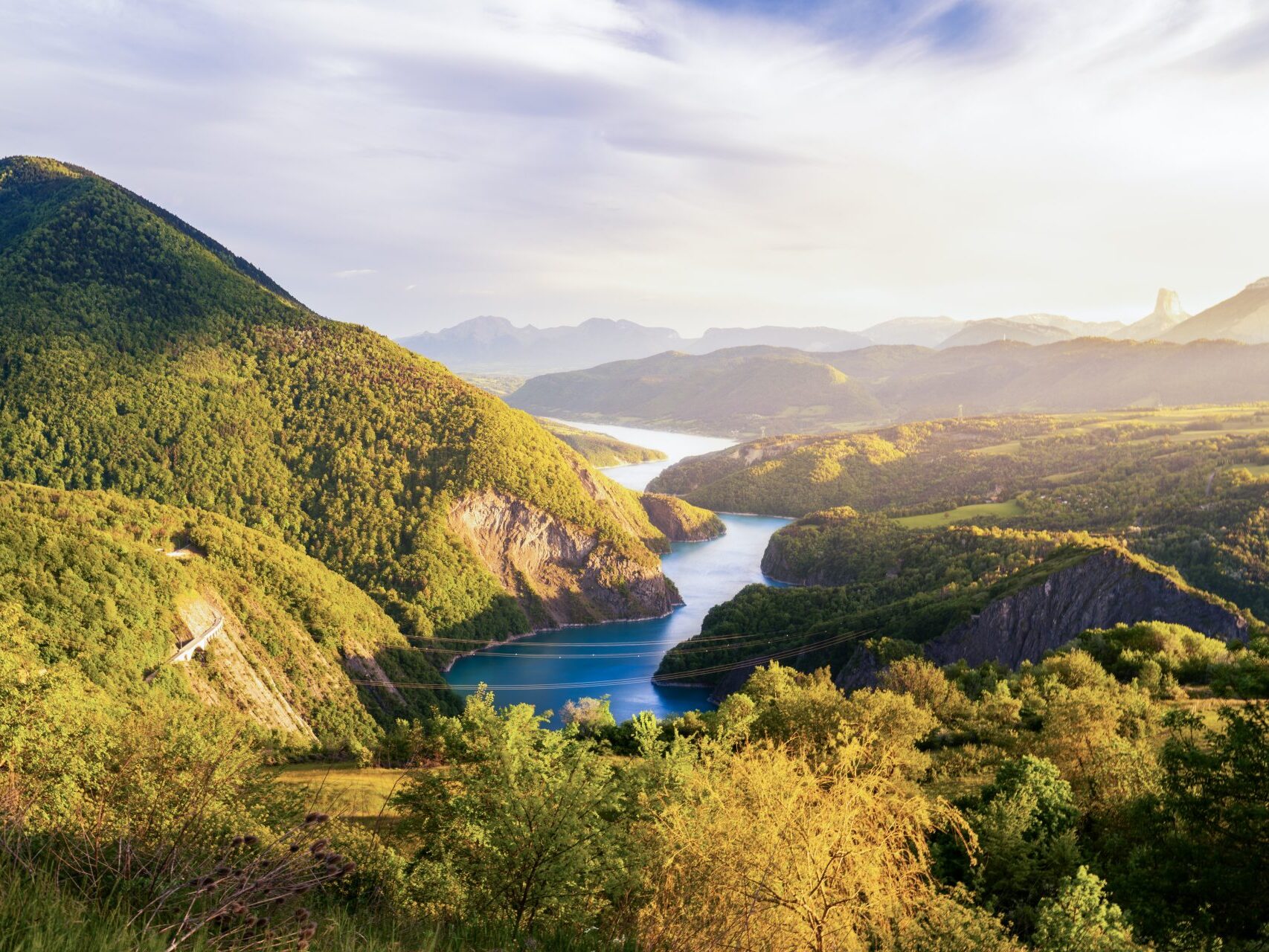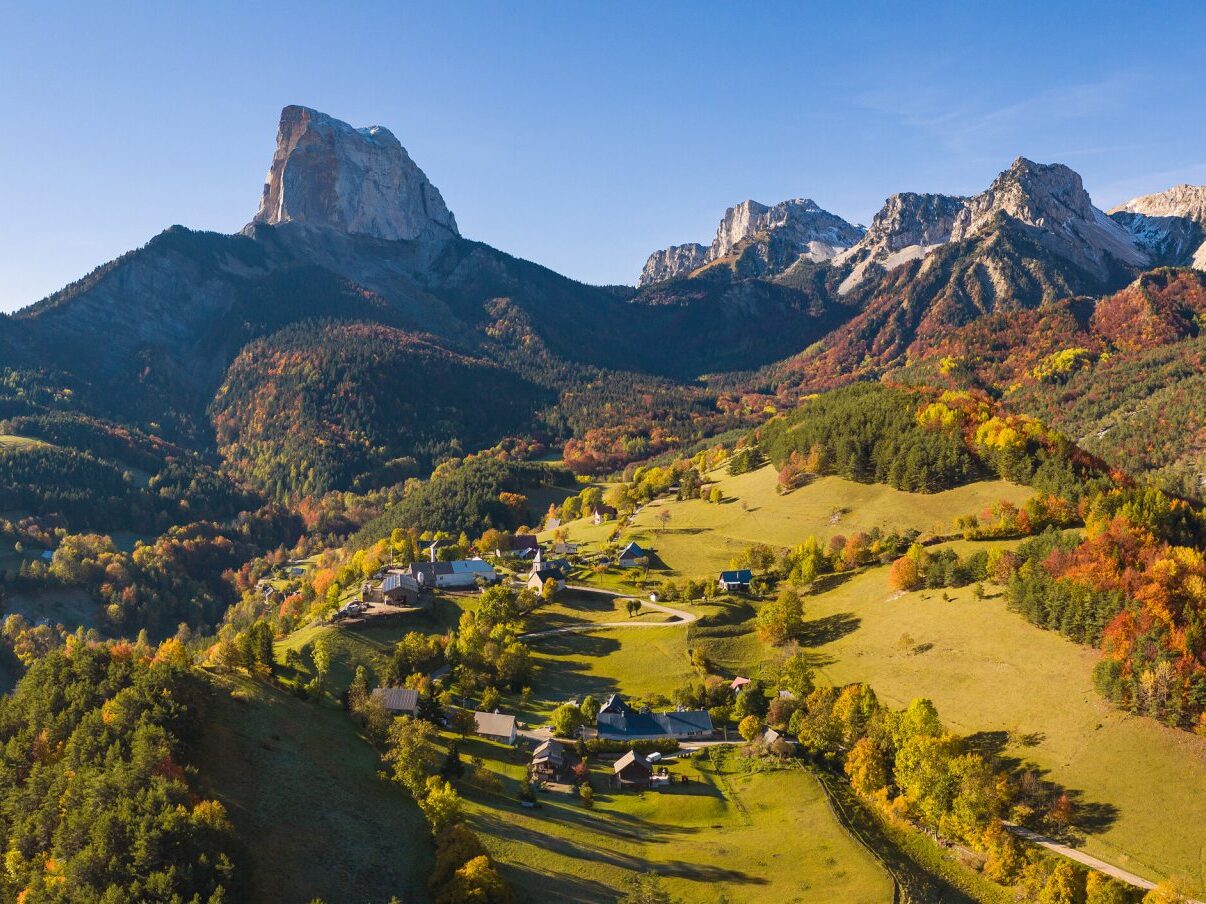Admiring it as you pass by, contemplating it from a distance or looking up from the foot of its imposing mass, you simply cannot ignore the Mont Aiguille!
Learn about the history of this limestone monument, a pinnacle of stone that detached eons ago from the Vercors mountain range, and how it is now a protected site rich in rare flora and fauna. Should you try to climb it? Or hike around it to appreciate the different facets of this “Mont Inaccessible”?
Where exactly is THE Mont Aiguille?
The Mont Aiguille is located in the Trièves, in the community of Chichilianne, south of Grenoble (in Isère (38), in the Auvergne Rhône Alpes region). It is considered one of the 7 wonders of the Dauphiné, and for some of us, it is considered the most beautiful mountain in the world!
Why is the Mont Aiguille this shape?
The Mont Aiguille is shaped like a tooth : a monumental, steep-sided block of limestone rock, which has broken away from the eastern balcony of the Vercors mountain range due to erosion. At the top it is practically flat, and is covered with a summit meadow, similar to the alpine pastures that can be seen throughout the Vercors Plateaux.
Hikes near this natural monument allow you to admire the Mont Aiguille from all angles.
and the alTitude of the Mont Aiguille IS?
The Mont Aiguille attains an altitude of 2087 metres. It is a little less than the Grand Veymont, another remarkable mountain in the Trièves, and also the highest point of the Vercors mountain range (2341 meters), dominating the East Balcony.
DID YOU KNOW The Mont Aiguille is the birthplace of mountaineering…
The Mont Aiguille, formerly known as “Mont Inaccessible“, has a unique history.
Its first ascent, on 26 June 1492, is considered to mark the birth of mountaineering! Captain Antoine de Ville’s expedition party, using ladders and pitons, was the first to set foot on the summit of the “fang”, which was later named “Aiguille-Fort”.
The adventurer Henri Giraud, an outstanding aviator and chief pilot at the Aéro-Club du Dauphiné achieved the feat of landing his plane on the summit meadow in 1957. He is the only one to have managed this extraordinary stunt!
Is it possible to climb the Mont Aiguille?
Yes! The ascent of Mont Aiguille is absolutely feasible and practicable via 30 climbing routes. Some of them, such as the “normal route” (north-west face) are very accessible and allow our visitors, accompanied by experienced mountain guides, to practice mountaineering and return with unforgettable memories! Others (La Tour des Gémeaux, the routes on the south-east and south-west faces) are more difficult routes reserved for experienced climbers.
A panoramic view from the summit
From the summit of the Mont Aiguille, you may spy :
- To the North, the Belledonne range, the Chartreuse mountains and Mont Blanc ;
- to the East & South-East: the Trièves, the Ebron valley, the Dévoluy massif mountain range with the Grande Tête de l’Obiou and the Grand Ferrand, the foothills of the Matheysine and the Ecrins massif mountain range
- to the West, the cliffs of the Grand Veymont and the Grande Moucherolle.
THE Mont Aiguille is a prOTECTed site
The Mont Aiguille is located in the Reserve Naturelle Nationale des Haut-Plateaux du Vercors. The fauna and flora are rare and protected. A large number of wild orchids, for example, can be found there. The summit meadow is an active observation ground for scientists, due to its geological isolation it constitutes an extreme environment compared to an island habitat.
Since the beginning of 2022, and following an increase in frequentation, the commune of Chichilianne has imposed a ban on camping on the summit meadow of Mont Aiguille on the grounds of environmental and biodiversity preservation.
The Grand Veymont
The highest point of the Vercors massif at 2341m, the Grand Veymont offers a magnificent 360° view! It overlooks the village of Gresse-en-Vercors, the Mont Aiguille and the Vercors East Balcony.
The ascent of the Grand Veymont is a challenging hike but offers lovely surprises like encounters with ibex, marmots and sometimes even vultures!
It has to be said that this is a very special hike through the Reserve Naturelle Nationale des Hauts-Plateaux du Vercors, a vast protected area.
Is the Mont Aiguille hollow?
In 2018, a report mentioned a strange discovery: supposedly cavers discovered a cavity in the Mont Aiguille, revealing that the “tooth” was hollow! This news item published on 1 April was in fact a well put together April Fool’s joke, even if the Mont Aiguille does indeed have a few “cavities” spotted over the years by hardy climbers.



